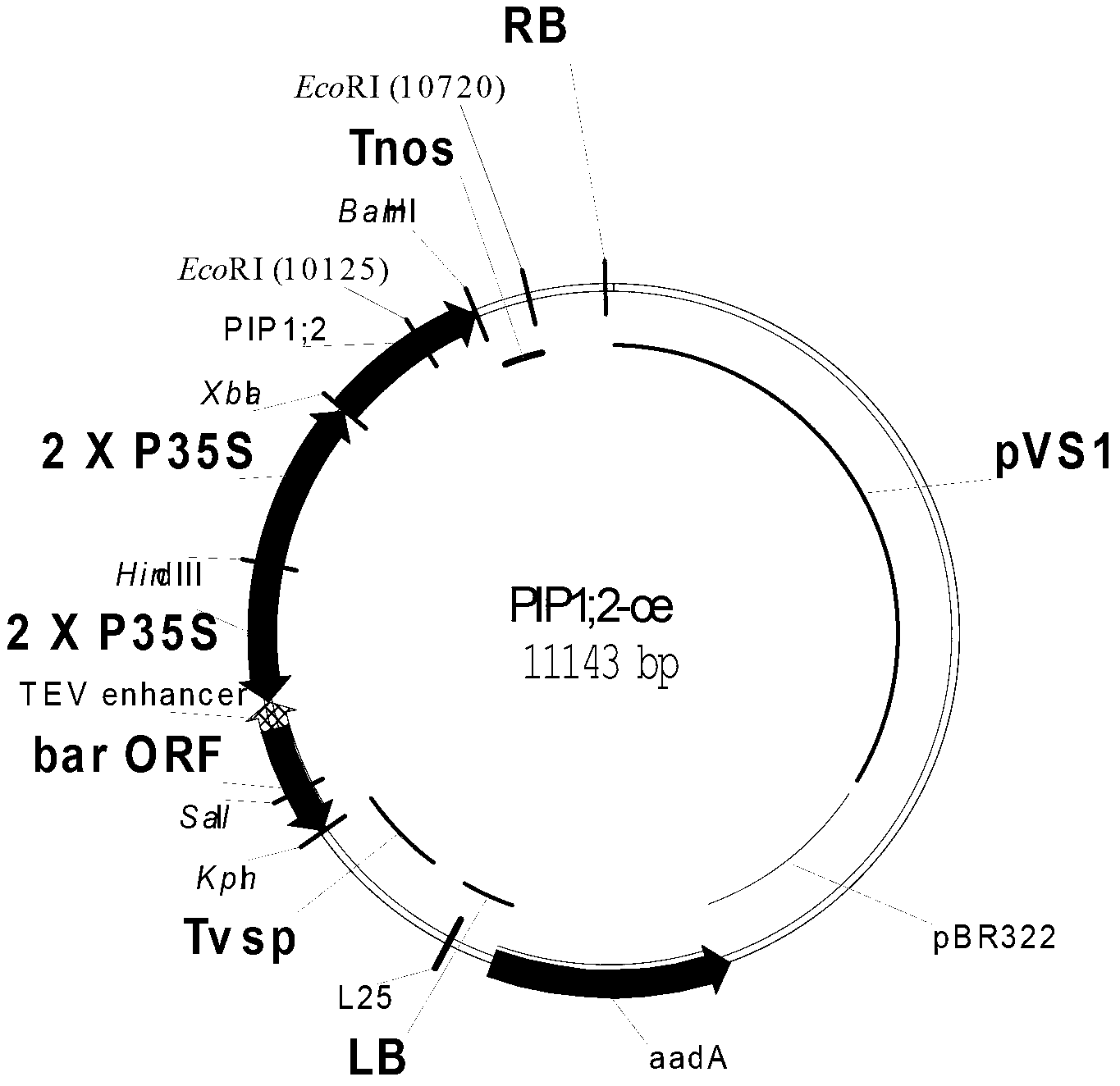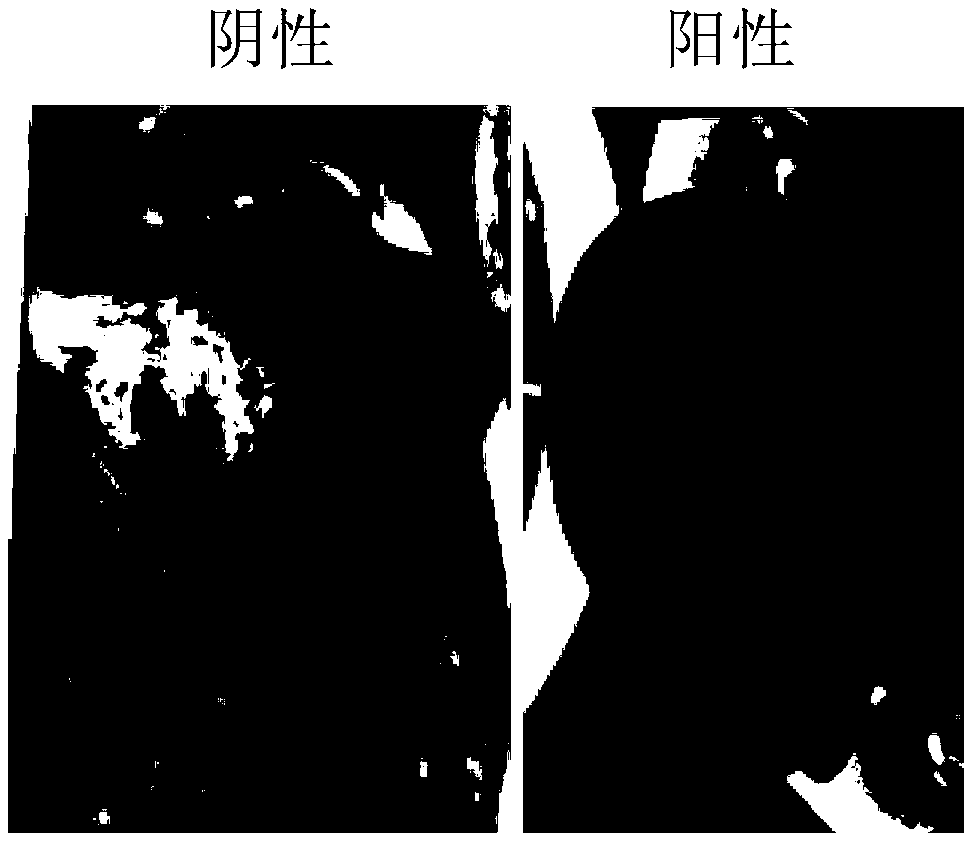Application of soybean aquaporin gene GmPIP1;2
An aquaporin and soybean technology, applied in the application, genetic engineering, plant genetic improvement and other directions, can solve the problem of no increase in drought resistance or salt resistance, achieve good application prospects, improve soybean yield, and have the effect of strong tolerance
- Summary
- Abstract
- Description
- Claims
- Application Information
AI Technical Summary
Problems solved by technology
Method used
Image
Examples
Embodiment 1
[0041] Embodiment 1, soybean PIP1; Cloning of 2 gene
[0042] (1) Extraction of total RNA: Take 50-100 mg of leaves of Williams 82 soybean seedlings at the true leaf stage, and use Trizol method to extract total RNA. The specific method is to grind soybean leaf samples into powder in liquid nitrogen, then add 1 ml of Trizol (Takala Company), thaw the ground samples at room temperature, and transfer them to 200 microliters of chloroform solution after the samples are completely "damp". In a 1.5 ml RNase-free centrifuge tube, shake vigorously to dissolve it completely in the lysate; shake at room temperature for 5 minutes and then centrifuge at 12000 g for 10 minutes at 4 °C. Aspirate the upper colorless aqueous phase, add an equal volume of isopropanol, slowly invert and mix well, leave at room temperature for 10 minutes, and then centrifuge at 12000 g for 10 minutes. Add 1 ml of 75% ethanol to the RNA pellet, wash thoroughly, centrifuge, dry, and add 30 µl of DEPC water to di...
Embodiment 2
[0045] Embodiment 2, GmPIP1; The construction of transgenic PIP1 of 2 genes; 2-Oe carrier
[0046] The vector is used for the overexpression of GmPIP1;2 gene in soybean. The full-length cDNA of GmPIP1;2 was connected to the binary vector pBAR, which can be used for Agrobacterium-mediated transgene, with the restriction endonuclease site SmalI. The pBAR vector carries a selection marker gene bar in the T-DNA region, which encodes glufosinate acetyl CoA transferase (PAT), which can catalyze the free aminoacetylation of glufosinate, thereby inactivating the herbicide glufosinate. GmPIP1;2 is driven by the 35S promoter. For the final vector PIP1;2-Oe, see figure 1 .
Embodiment 3
[0047] Embodiment 3, GmPIP1; The cultivation of 2 gene overexpression transgenic soybean
[0048] The original recipient material of soybean transgene was Williams 82. The transgenic method is as follows:
[0049] (1). Seed disinfection: The surface disinfection of soybean seeds is sterilized by chlorine gas dry method. First, select clean seeds that are mature and plump, without disease spots, and without hardness, and arrange them in a single layer in a 90*15mm petri dish; place the petri dish Open the cover and put it in the desiccator. Place a 500ml glass beaker in the desiccator. Use a 100ml measuring cylinder to measure 75ml of commercial bleach and add it to the beaker. Measure 3ml of 12N HCl with a 10ml measuring cylinder and add it slowly along the wall of the beaker; cover it The lid of the desiccator, to ensure that the container is sealed, let it stand overnight for 10-16 hours; after the sterilization is completed, transfer the petri dish to a sterile ultra-clean...
PUM
 Login to View More
Login to View More Abstract
Description
Claims
Application Information
 Login to View More
Login to View More - R&D
- Intellectual Property
- Life Sciences
- Materials
- Tech Scout
- Unparalleled Data Quality
- Higher Quality Content
- 60% Fewer Hallucinations
Browse by: Latest US Patents, China's latest patents, Technical Efficacy Thesaurus, Application Domain, Technology Topic, Popular Technical Reports.
© 2025 PatSnap. All rights reserved.Legal|Privacy policy|Modern Slavery Act Transparency Statement|Sitemap|About US| Contact US: help@patsnap.com



